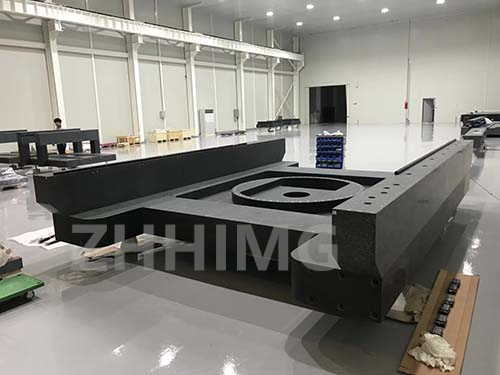Assembling, testing, and calibrating granite components for devices used in the manufacturing process of LCD panels may seem like a daunting task, but it can be accomplished successfully by following a few simple steps. In this article, we will discuss the process of assembling, testing, and calibrating granite components to ensure the best performance and accuracy for your LCD panel manufacturing process.
Step 1: Assembling the Granite Components
To assemble granite components, you will need a set of tools that includes a silicone-based adhesive, a torque wrench, and a set of crosshead screwdrivers. Begin by cleaning the granite surfaces with a lint-free cloth and inspecting them for any defects. Using the silicone-based adhesive, place the components in their correct position and allow to dry for a minimum of 24 hours. Once the adhesive has fully cured, use the torque wrench and crosshead screwdriver to tighten the screws on the components to the recommended torque value.
Step 2: Testing the Granite Components
Testing the granite components is critical to ensure that they meet the required performance specifications. One of the simplest tests to perform is the flatness test. This test is conducted by placing the granite component on a flat surface and using a dial indictor to measure the deviation from flatness. If the deviation is greater than the allowed tolerance, then further calibration may be required.
Step 3: Calibrating the Granite Components
Calibrating the granite components is essential to achieving the maximum accuracy and performance during the manufacturing process. There are different ways to calibrate granite components; one method involves using a laser interferometer to measure the accuracy of the component surface. The interferometer will shine a laser beam onto the surface of the granite component, and the reflected beam will be measured to determine the deviation from a flat plane.
Another method used to calibrate granite components is using a coordinate measuring machine (CMM). This machine uses a probe to measure the surface of the granite component in 3D. CMMs can also measure the position of features such as holes or slots, which is useful for ensuring that components are precisely located relative to each other.
Conclusion
In conclusion, assembling, testing, and calibrating granite components for devices used in the manufacturing process of LCD panels are essential to achieve the most precise and accurate results. The process requires careful attention to detail, the use of appropriate tools and equipment, and a willingness to follow the required procedures. By following the steps outlined in this article, you can ensure that your granite components are assembled, tested, and calibrated to meet the exacting requirements of your manufacturing process.
Post time: Nov-29-2023

